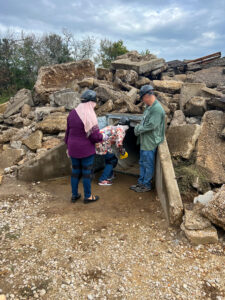
In October, the Center for Nuclear Security Science and Policy Initiatives (NSSPI) conducted a Workshop on Gamma Spectrometry for National Security with the Department of Energy’s National Nuclear Security Administration’s Office of Nuclear Smuggling Detection and Deterrence (NSDD). Workshop participants were Algerian government experts and first responders responsible for nuclear safeguards, research and development, and emergency response.

The team of U.S. experts that served as instructors for the course were NSSPI Deputy Director Dr. Craig Marianno, Dr. William Geist and Dr. David Mercer of Los Alamos National Laboratory, and Dr. William Johnson of Sandia National Laboratories. Combining lectures, laboratory experiences, and field exercises, the focus of the course was to familiarize participants with different types of software and techniques for analyzing nuclear and radiological materials and to provide hands-on experiences with both laboratory and field radiation detection equipment. Participants spent a full day at the Texas A&M Engineering Extension Agency’s Disaster City facility, where they conducted vehicle searches and took part in an exercise to locate and isolate a source in the field using vehicular and handheld instruments.
One participant remarked, “The training lesson was very useful in Disaster City. For my part, it was my first experience, and I benefited from the method of field work in terms of detecting radiation sources in several different ways and locations.”
Dr. Marianno and his student researchers conduct several field detection exercises at Disaster City each year. “It is always a pleasure to work with and train scientists and responders,” he said. “The Algerian colleagues were enthusiastic and eager to learn. It was a great week that went by too fast!”
This workshop was funded by NSDD, which works internationally to develop and deploy capabilities, technologies, and strategies aimed at identifying and stopping the smuggling of nuclear materials that could be used for illicit purposes, such as in the creation of nuclear weapons or radiological dispersal devices.






